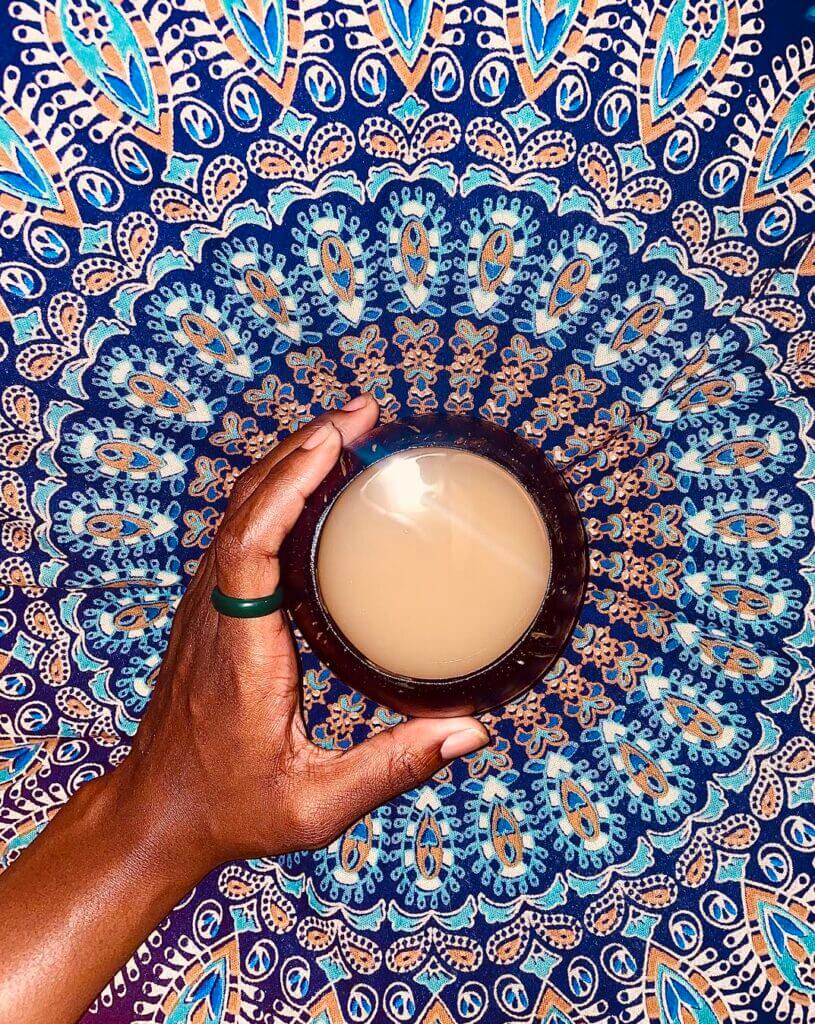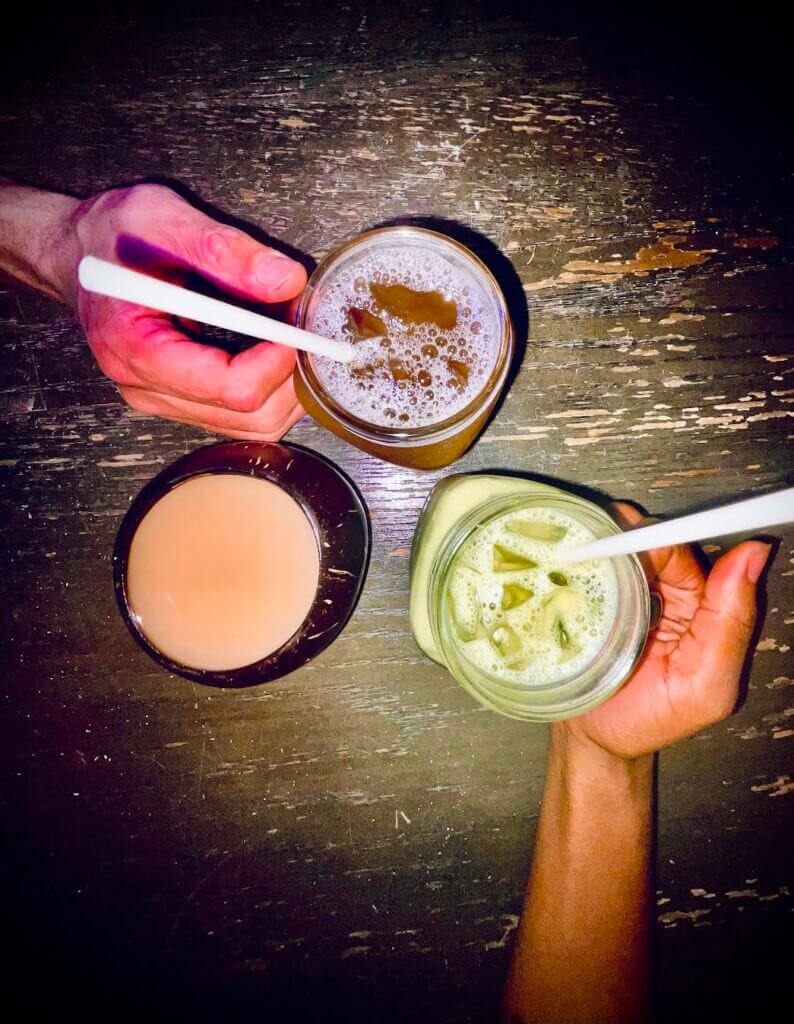Kava Guide. Here’s a guide differentiating between various strains of noble kava, highlighting their unique characteristics and origins:

1. Kava Guide. Vanuatu Kava:
Origin: Vanuatu, an island nation in the South Pacific known for its rich kava culture.
Kava Guide.Characteristics:
- Vanuatu kava is renowned for its balanced effects, offering a combination of relaxation and mental clarity.
- It is often described as having a smooth and mild taste, making it appealing to newcomers to kava.
- Vanuatu kava is typically classified into different grades based on the part of the plant used and the preparation method.
2. Kava Guide. Tongan Kava:
Origin: Tonga, another South Pacific island nation with a long history of kava cultivation and consumption.
Kava Guide.Characteristics:
- Tongan kava is known for its strong and sedative effects, making it popular among those seeking deep relaxation.
- It has a distinctive flavor profile, with earthy and peppery notes that can be more intense compared to other strains.
- Tongan kava is often used in ceremonial and social settings in Tonga, where kava holds significant cultural importance.

3. Kava Guide. Fijian Kava:
Origin: Fiji, a group of islands in the South Pacific known for its lush landscapes and vibrant kava culture.
Kava Guide. Characteristics:
- Fijian kava is prized for its potent effects, which can range from euphoric and uplifting to deeply relaxing, depending on the variety.
- It is often described as having a strong and pronounced flavor, with hints of bitterness and spice.
- Fijian kava is traditionally prepared using the “waka” method, which involves grinding the lateral roots of the kava plant to produce a strong and concentrated beverage.
4. Kava Guide. Waka Kava:
Origin: Various kava-growing regions, including Fiji and Vanuatu.
Kava Guide. Characteristics:
- Waka kava refers to a specific type of kava preparation that emphasizes the use of lateral roots, which are believed to contain higher concentrations of kavalactones.
- It is known for its potent effects and strong flavor, making it popular among experienced kava enthusiasts.
- Waka kava is often used for ceremonial purposes and special occasions due to its strength and intensity.
5. Kava Guide. Papua New Guinea Kava:
Origin: Papua New Guinea, a country located in the southwestern Pacific region, sharing a border with Indonesia.
Kava Guide. Characteristics:
- Papua New Guinea kava is relatively rare compared to kava from other regions but is gaining recognition for its unique flavor profile and effects.
- It is often described as having a smoother and milder taste compared to other strains, with a balanced combination of relaxation and mental clarity.
- Papua New Guinea kava is typically prepared using traditional methods, such as grinding and straining the root material to produce a potent beverage.
6. Kava Guide. Hawaiian Kava:
Origin: Hawaii, a group of islands in the central Pacific known for their diverse ecosystems and vibrant cultural heritage.
Kava Guide. Characteristics:
- Hawaiian kava is cultivated in the fertile soils of the Hawaiian Islands, where it benefits from the region’s unique climate and growing conditions.
- It is known for its smooth and mellow flavor, with subtle hints of sweetness and earthiness.
- Hawaiian kava is prized for its calming and relaxing effects, making it popular among those seeking stress relief and relaxation.

Choosing the Right Strain:
When selecting a strain of noble kava, consider factors such as your desired effects, flavor preferences, and tolerance level. Experimenting with different strains and preparations can help you find the one that best suits your needs and preferences. Remember to purchase kava from reputable sources to ensure its quality and authenticity. Whether you’re looking for a potent and sedative strain or a mild and uplifting variety, there’s a noble kava strain out there to suit your taste and preferences. Enjoy exploring the diverse world of noble kava!
Brewing kava tea
Making kava tea involves several steps to extract the kavalactones from the kava root and create a potent and enjoyable beverage. Here’s a detailed guide to the process:
Ingredients:
- Kava root powder: Choose a high-quality noble kava root powder from a reputable source. The amount will depend on your desired potency and serving size.
- Warm water: Use warm (not boiling) water to help release the kavalactones without destroying their beneficial properties.
- Strainer or muslin bag: You’ll need a fine-mesh strainer or a muslin bag to strain the kava tea and remove any sediment.
Instructions:
- Measure the Kava Root Powder: Determine how much kava tea you want to make and measure out the appropriate amount of kava root powder. A common starting point is 2-4 tablespoons per serving, but you can adjust this based on your preference and tolerance level.
- Prepare the Kava: Place the measured kava root powder into a bowl or muslin bag. If using a muslin bag, tie it securely to prevent any powder from escaping during the brewing process.
- Warm the Water: Heat water to around 120-140°F (49-60°C). Avoid using boiling water, as excessive heat can degrade the kavalactones and diminish the tea’s potency.
- Mix the Kava: Pour the warm water over the kava root powder in a large bowl or mixing vessel. Use enough water to fully immerse the powder and allow it to extract the kavalactones effectively.
- Knead the Kava: Using your hands or a spoon, knead and massage the kava root powder in the water for several minutes. This process helps to release the kavalactones from the powder and create a potent kava tea.
- Let it Steep: Allow the kava root powder to steep in the warm water for at least 5-10 minutes. Some people prefer to let it steep for longer to extract more of the kavalactones, but be mindful that extended steeping times can lead to a stronger and potentially more bitter flavor.
- Strain the Tea: After steeping, use a fine-mesh strainer or muslin bag to strain the kava tea into a clean bowl or serving vessel. Press or squeeze the kava root powder to extract as much liquid as possible while leaving behind any sediment.
- Serve and Enjoy: Pour the strained kava tea into cups or coconut shells and serve immediately. Some people prefer to chill the tea before serving, while others enjoy it warm. You can also add flavorings or sweeteners like honey or coconut milk to enhance the taste, although many purists prefer to drink it plain.
Tips for Making Kava Tea:
- Use fresh, high-quality kava root powder for the best results.
- Experiment with different brewing methods, steeping times, and serving sizes to find what works best for you.
- Start with a lower dosage and gradually increase as needed, especially if you’re new to kava or sensitive to its effects.
- Store any leftover kava tea in the refrigerator and consume it within a day or two for optimal freshness.
By following these steps, you can create a delicious and potent kava tea that showcases the unique flavor and effects of this traditional South Pacific beverage. Enjoy your kava tea responsibly and savor the relaxation and tranquility it brings!
A kava tea ceremony is a traditional and culturally significant ritual practiced in many South Pacific islands, such as Fiji, Vanuatu, Tonga, and Samoa. These ceremonies serve as a way to honor the kava plant, foster social bonds, and promote relaxation and community harmony. Here’s a description of a typical kava tea ceremony:
Preparation:
- Gathering of Participants: The ceremony typically takes place in a communal setting, such as a village meeting house or outdoor gathering space. Participants gather to socialize, relax, and partake in the kava tea together.
- Preparation of Kava: A designated individual, often referred to as the “kava maker” or “kava master,” prepares the kava tea. They select high-quality noble kava root and grind it into a fine powder using a stone mortar and pestle or modern grinder.
- Brewing of Kava Tea: The kava maker places the ground kava root powder into a large wooden or ceramic bowl called a “tanoa” or “kava bowl.” Warm water is added to the bowl, and the kava maker kneads and massages the mixture to extract the kavalactones and create a potent kava tea.
KAVA KAVA Ceremony:
- Opening Prayer or Chant: The ceremony often begins with an opening prayer, chant, or blessing led by a respected elder or community leader. This sets the tone for the gathering and honors the spiritual significance of the kava plant.
- Presentation of Kava: Once the kava tea is ready, the kava maker presents the bowl to the participants, often holding it with both hands as a sign of respect. The bowl may be adorned with traditional decorations or carvings, symbolizing the cultural significance of the ceremony.
- Serving of Kava: The kava maker pours the kava tea into small coconut shells or cups and distributes them to the participants. Each person receives a serving of kava, which they hold in both hands before drinking as a sign of reverence.
- Toast or Acknowledgment: Before drinking the kava, participants may offer a toast, express gratitude, or acknowledge the occasion in some way. This may include sharing blessings, well-wishes, or words of wisdom with the group.
- Drinking of Kava: Participants drink the kava tea in a specific manner, often following cultural protocols and customs. This may involve clapping or clinking coconut shells together before and after drinking, as well as drinking the kava in a single gulp to show respect for the ceremony.
- Socializing and Bonding: Throughout the ceremony, participants socialize, share stories, and engage in meaningful conversation. The relaxed and tranquil atmosphere created by the kava tea encourages open communication and fosters a sense of community and connection among the participants.
Closing:
- Closing Prayer or Chant: As the ceremony comes to an end, a closing prayer, chant, or blessing may be offered to thank the kava plant and honor the spirit of the gathering. This brings a sense of closure and unity to the ceremony.
- Expression of Gratitude: Participants may express gratitude to the kava maker, the hosts of the ceremony, and each other for their presence and participation. This reinforces the sense of community and camaraderie fostered by the ceremony.
- Conclusion: With the ceremony concluded, participants may continue socializing, enjoying each other’s company, and savoring the effects of the kava tea. Some ceremonies may include additional activities, such as music, dance, or storytelling, to further enhance the experience.
Overall, a kava tea ceremony is a meaningful and enriching experience that celebrates the cultural heritage and spiritual significance of the kava plant while fostering social bonds and promoting relaxation and harmony within the community.
